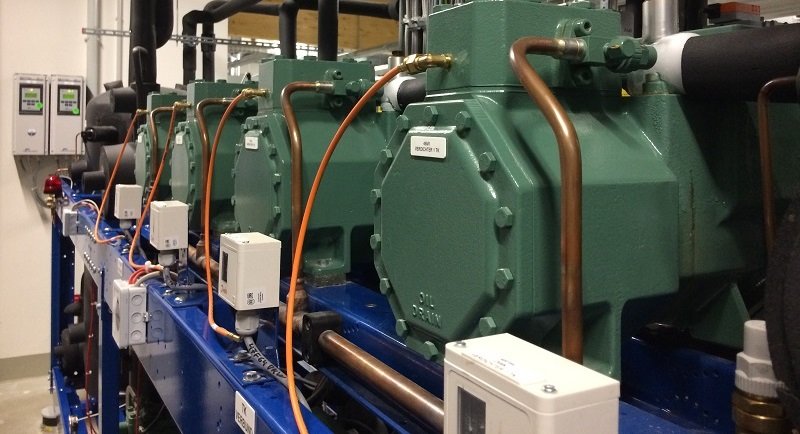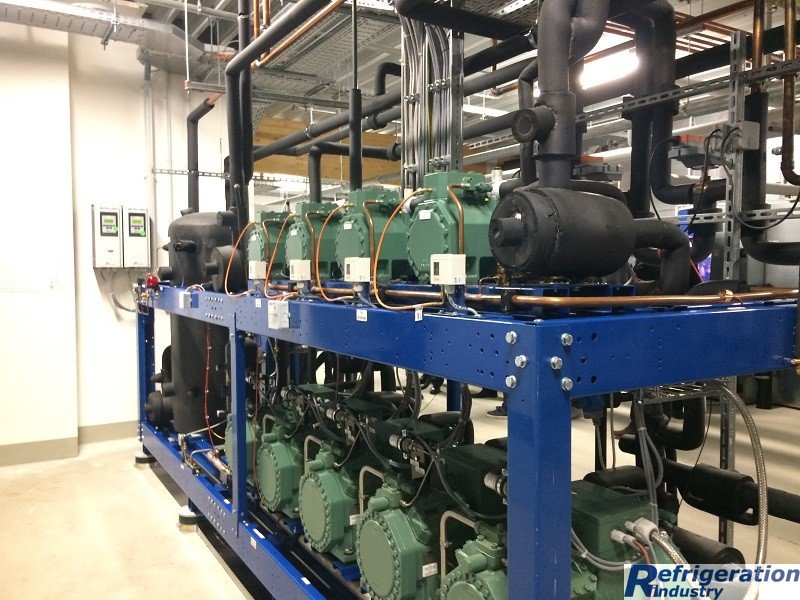Refrigeration Units
Refrigeration units are the backbone of any refrigeration system. Whether for climate control, food preservation, or industrial processing, these units are engineered to create and maintain low-temperature environments across a wide range of applications.
From air conditioning in office buildings to deep-freeze storage in supermarkets and logistics centers, refrigeration units are central to comfort, safety, and productivity in modern life.
Key Applications of Refrigeration Units
-
Air Conditioning: Cooling and dehumidifying indoor spaces in residential, commercial, and industrial environments.
-
Medium-Temperature Cooling: Preserving perishable goods in supermarkets, cold rooms, and refrigerated display equipment.
-
Low-Temperature Cooling: Enabling long-term storage of frozen foods and sensitive industrial products in freezer compartments and deep-freeze warehouses.

Core Components of Refrigeration Units
Refrigeration units consist of several critical components that work together to achieve efficient cooling:
1. Compressors: The Heart of the System
The operation of a refrigeration unit largely depends on its compressor. These devices circulate refrigerant through the system, enabling heat transfer. Common types of compressors include:
- Reciprocating Compressors: Widely used for their efficiency and reliability.
- Scroll Compressors: Preferred for high-temperature applications due to their quiet and reliable performance.
- Screw Compressors: Ideal for high-capacity systems, offering performance levels of several megawatts.
2. Condensers
Condensers expel heat absorbed by the refrigerant. They are typically categorized as:
- Air-Cooled Condensers: Use ambient air for cooling, suitable for compact and medium-sized systems.
- Water-Cooled Condensers: Employ water as a cooling medium, ideal for larger installations requiring greater efficiency.
3. Evaporators
Evaporators absorb heat from the environment, lowering the temperature within the desired area. They play a key role in both small-scale and industrial refrigeration systems.
4. Expansion Devices
These components control the refrigerant flow into the evaporator, optimizing cooling performance while maintaining system efficiency.
Types of Refrigeration Units
1. Single-Compressor Refrigeration Units
These units feature a single refrigerant-cooled compressor and are widely used in smaller applications due to their simplicity and cost-effectiveness.
- Applications: Small storage chambers, refrigerated furniture (display cases, cabinets), and air conditioning systems.
- Advantages: Compact design, affordability, and ease of maintenance.
Single-compressor units often come equipped with hermetically sealed reciprocating compressors. These systems range in capacity and can cool small spaces or condition larger premises with appropriate scaling.

2. Multi-Compressor Refrigeration Units
Multi-compressor systems integrate several compressors within a single circuit, increasing total capacity and offering dynamic load management.
- Applications: Large supermarkets, industrial cooling plants, and facilities requiring dual-temperature modes.
- Advantages:
- Capacity Control: Activate or deactivate compressors based on cooling demands.
- Flexibility: Efficiently handle varying loads with improved energy efficiency.
However, these systems are structurally more complex and require additional regulators, compensators, and pipelines, increasing operational intricacy.
Some multi-compressor units can simultaneously support two temperature modes—medium and low temperatures—by installing two separate refrigeration circuits.

How to Choose the Right Refrigeration Unit
Selecting a refrigeration unit involves balancing technical requirements, operational needs, and long-term efficiency. Key considerations include:
- Cooling Capacity: Match the unit's capacity to your thermal load requirements.
- Energy Efficiency: Choose systems with high energy ratings to lower operational costs and minimize environmental impact.
- Refrigerant Type: Opt for eco-friendly refrigerants that comply with regulations and sustainability goals.
- System Flexibility: Consider multi-compressor systems for scalable cooling needs.
- Maintenance and Support: Ensure availability of after-sales service and spare parts for reliable operation.
Find Suppliers and Manufacturers
To simplify your search for reliable suppliers and manufacturers, consider using specialized directories:
- Suppliers Directory: Browse a comprehensive list of refrigeration equipment suppliers at Refindustry Suppliers Directory.
- Manufacturers Directory: Explore various refrigeration equipment manufacturers at Refindustry Manufacturers Directory.
These directories provide detailed information about companies, including their products, services, and contact details, helping you make an informed decision.
The Future of Refrigeration Units
The refrigeration industry is evolving toward smarter, more sustainable solutions. Emerging trends include:
-
IoT Integration: Real-time monitoring and predictive maintenance via smart sensors.
-
Natural Refrigerants: Transition to CO₂, hydrocarbons, and ammonia to reduce environmental impact.
-
High-Efficiency Compressors: Innovations in variable-speed and magnetic bearing technology are driving performance gains.
As global demand for refrigeration continues to rise, the focus will increasingly shift to systems that balance performance, energy savings, and climate responsibility.
Read more
Refrigeration compressorsClassification of refrigeration systems
How Make Cold Room With Own Hands
Refrigeration Doors


